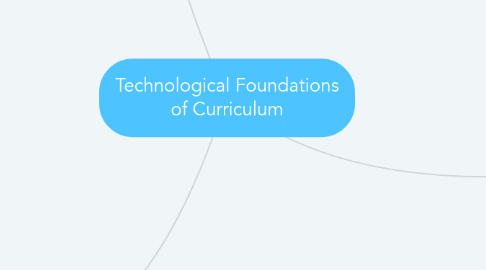
1. The Versatile Computer
1.1. 2007--92% of classrooms in 'all' schools
1.1.1. Professional media specialists
1.1.2. Driving Education Reform
1.2. Evolution of "CAC"
1.2.1. Word processessors
1.2.1.1. Motivation to develop writing skills
1.2.2. Growth of online resources
1.2.3. Online vendors aligning with standards
1.2.4. Purpose
1.2.4.1. 4 key components of learning
1.2.4.1.1. Active engagement
1.2.4.1.2. Group participation
1.2.4.1.3. Interaction and feedback
1.2.4.1.4. Connection to real-world experts
1.2.5. Computer-Assisted Curriculum
1.3. BYOD
1.3.1. financial
1.3.2. Self-directed and motivated learning
1.3.3. Concerns about inequity and bullying
1.3.3.1. most have access
1.3.3.2. Those who don't can borrow from school
1.3.3.3. School-provided devices
1.4. Multiculturalism
1.4.1. Classroom is first exposure to diversity for many
1.4.2. Online applications
1.4.3. Guest speakers enhanced with tech
1.4.4. Connect students with their culture
1.4.4.1. Online penpal
1.4.5. Language education
1.5. Applications across the curriculum
1.5.1. real-world application
1.5.2. create the big picture
2. Practical Teaching Advice
2.1. Virtual Field Trips
2.2. Listservs
2.3. interaction and feedback using media
2.4. interdisciplinary applications
3. The Internet Explosion
3.1. Information Literacy
3.1.1. Growth of Education
3.1.1.1. NCLB--$15 mil./5 year research
3.1.2. Critical for American continued growth
3.1.3. Definition
3.1.3.1. Identify what is needed
3.1.3.2. Understanding
3.1.3.3. Sources
3.1.3.4. Share
3.1.4. Necessary for learner-centered education
3.1.5. Teachers often hold students back with lack of tech knowledge
3.1.5.1. Students can teach teachers
3.1.5.1.1. effect on classroom atmosphere
3.1.5.1.2. "teacher knows all" attitude
3.2. Collaborative Learning
3.2.1. Digital bulletin boards
3.2.2. Forums
3.2.3. Newsgroups
3.2.4. listserv
3.2.4.1. email lists of topical discussions
3.3. Blogging
3.3.1. Professional development
3.4. Digital Storytelling
3.4.1. expression for poor readers and writers
3.4.2. integrate media and interdisciplinary ideas
3.5. Podcasts
3.6. Other digital resources
3.6.1. interactive whiteboards
3.6.2. WebQuests
3.6.3. Virtual Field Trips
3.6.4. Learning Management Systems
3.7. Impact on Learners
3.7.1. Student-centered methods
3.7.2. interconnected learning
3.7.2.1. Not always linear

